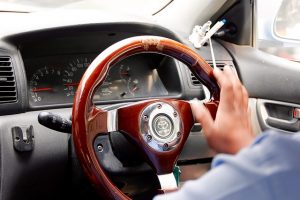 When you’re on a long road trip, cruise control can quickly become one of your favorite features of your car. Instead of having to keep your foot on the gas pedal for lengthy stretches of time, you can simply set a speed, and your system will maintain that speed until you tell it to do otherwise.
When you’re on a long road trip, cruise control can quickly become one of your favorite features of your car. Instead of having to keep your foot on the gas pedal for lengthy stretches of time, you can simply set a speed, and your system will maintain that speed until you tell it to do otherwise.
Benefits of Cruise Control
Not only does the cruise control system help you keep from getting a sore and tired foot and ankle, but also it can help you avoid getting speeding tickets. When you’re out on the open road, it’s easy to have a lead foot if there aren’t a lot of other cars around. But cruise past a highway patrol officer and you may find yourself getting written up for speeding. When you lock in your speed with cruise control, you won’t be as tempted to keep accelerating.
How It Works
The actual buttons or knobs used to engage and use cruise control might look different between various vehicles, but the way the system functions is generally the same for all cars and trucks. After you turn on cruise control, you must then press the acceleration or set button to set your current speed as the speed at which you want to keep driving. Most systems also have two separate buttons for increasing and decreasing the speed so that you can go faster or slower without applying the brakes or pressing the gas.
You can turn the system off completely to disengage cruise control, or you can tap the brake to start over.
How Cruise Control Is Improving
Cruise control has been a feature on cars for many years, but in the recent past, automobile manufacturers have been modifying the system to make it safer and more functional. Adaptive cruise control, one of the newest safety features on cars, also adds convenience. These cars include sensing technologies that monitor what is ahead of and around the vehicle on the road.
When you engage the adaptive cruise control feature, the system uses the sensing technology to determine how close a car is to your front bumper. Before you can get too close, it automatically slows you down to help you stay a safe distance behind the car ahead. Some systems also have settings for short, medium, or long, allowing you to determine just how close you can get before it engages.
Benefits of Adaptive Cruise Control
Unlike regular cruise control, which requires you to constantly adjust your speed based on other drivers, adaptive cruise control does a lot of the monitoring for you. When it senses that you are coming up on a car in front of yours too quickly, it slowly applies the brakes to help slow your speed and keep you from getting too close.
Give your legs a break, and use cruise control the next time you have a long drive.
Image Via Pixabay



